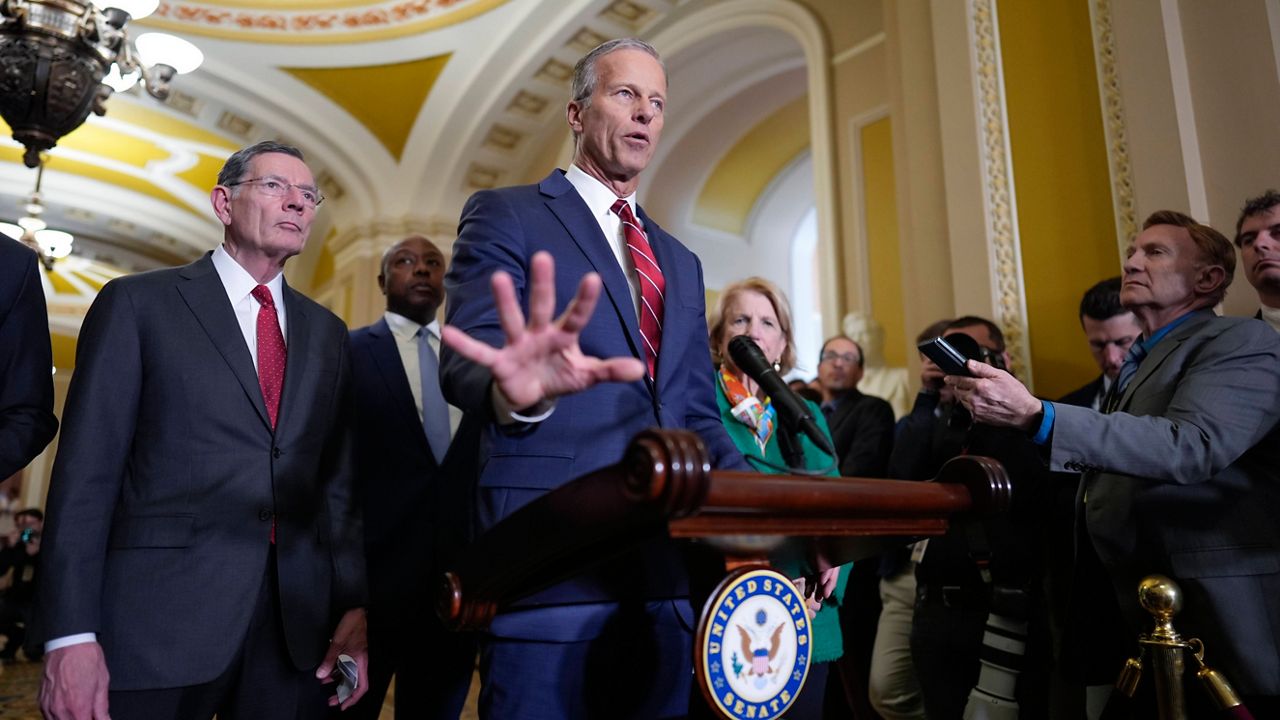One year since a provision shielding people from losing Medicaid coverage during the COVID-19 pandemic expired, millions of people around the country have been cut from the health care program, a joint federal and state effort to provide coverage to low-income Americans.
The law — included in the coronavirus relief package passed by Congress at the beginning of the pandemic in 2020 — officially lapsed in April of last year, requiring states to set off on Medicaid unwinding, the arduous process of checking enrollees’ eligibility and cutting those who no longer qualify for the first time in three years.
While states started the task at different points in the ensuing months after April 2023 and are expected to complete it at varying times, some are now nearing the end of the process, giving a clearer picture of the impact around the country as President Joe Biden makes lowering the cost of health care and widening coverage a key reelection pitch to voters.
Over the last 12 months, more than 20 million people have been disenrolled from Medicaid coverage in their states, according to health policy organization KFF, which compiles data from states and the Centers for Medicare & Medicaid Services.
That already exceeds the 15 million people that the federal government estimated at the beginning of the process would be cut by the end – with many states still not done.
Thus far, KFF’s analysis of available data shows significantly more than half of those cut, about 69%, were disenrolled for procedural reasons, meaning they were not necessarily deemed ineligible but rather did not complete the renewal process, potentially for reasons such as outdated contact information.
While many could have had life changes during the three-year pandemic pause that made them ineligible, the fear, by health care advocates, with the procedural cuts is that people who are still eligible could be cut because they didn’t understand the renewal process or did not know it was restarting.
In Ohio, for instance, which is at the end of its process, the director of the state’s Department of Medicaid, Maureen Corcoran said her department deployed eight different forms of outreach to enrollees, including emails, letters and texts.
“After those eight attempts to reach the individual, if they did not respond, that's considered procedural because they could very well be eligible but you don't really know because they didn't respond,” she said.
In total, Ohio sent about 600,000 termination notices after the outreach, however, officials emphasized not every one of those people ended up being cut. The notice, they said, led some people to get in touch with the county which facilitated the renewal process.
There is a wide variation in the figures by state, with the time the process was started and the format in which local officials chose to carry it out, playing a role.
Wisconsin started its process in June 2023, according to the Wisconsin Department of Health Services. As of March 2024, the department reported just less than 1.39 million Medicaid enrollees, down from just more than 1.68 million in May 2023, the month before the process began.
Biden has sought to make his efforts to lower health care costs and the record enrollment in the Affordable Care Act, colloquially known as Obamacare, under his administration a key campaign pitch to voters as he seeks another four years in the White House.
Just last month, the president traveled to New Hampshire and North Carolina to tout what he considers some of his most significant accomplishments in the area, such as enabling Medicare to negotiate lower prescription drug prices, capping insulin costs at $35 a month and total out-of-pocket prescription drug costs at $2,000 per year for seniors on Medicare.
In a statement, a Centers for Medicare & Medicaid Services spokesperson said the agency will use “every tool at its disposal to protect and strengthen access to coverage so individuals and families can maintain access to the health care they need,” amid the unwinding process.
In a move intended to help address the growing number of people losing coverage, last month, the Biden administration announced it is extending the special enrollment period in which those cut from Medicaid can sign up for Marketplace coverage through HealthCare.gov from the end of July to the end of November.
As of the end of 2023, just 2.4 million of those who lost coverage during the unwinding process enrolled in selected plans through HealthCare.gov, according to CMS.
As for Ohio, Corcoran said the process required her department to be “nimble” and ready to “pivot” at any time as federal guidance and interpretation “shifted,” specifically pointing to guidance from CMS to start processing renewal cases as individuals rather than households amid concerns about the number of children losing coverage.








